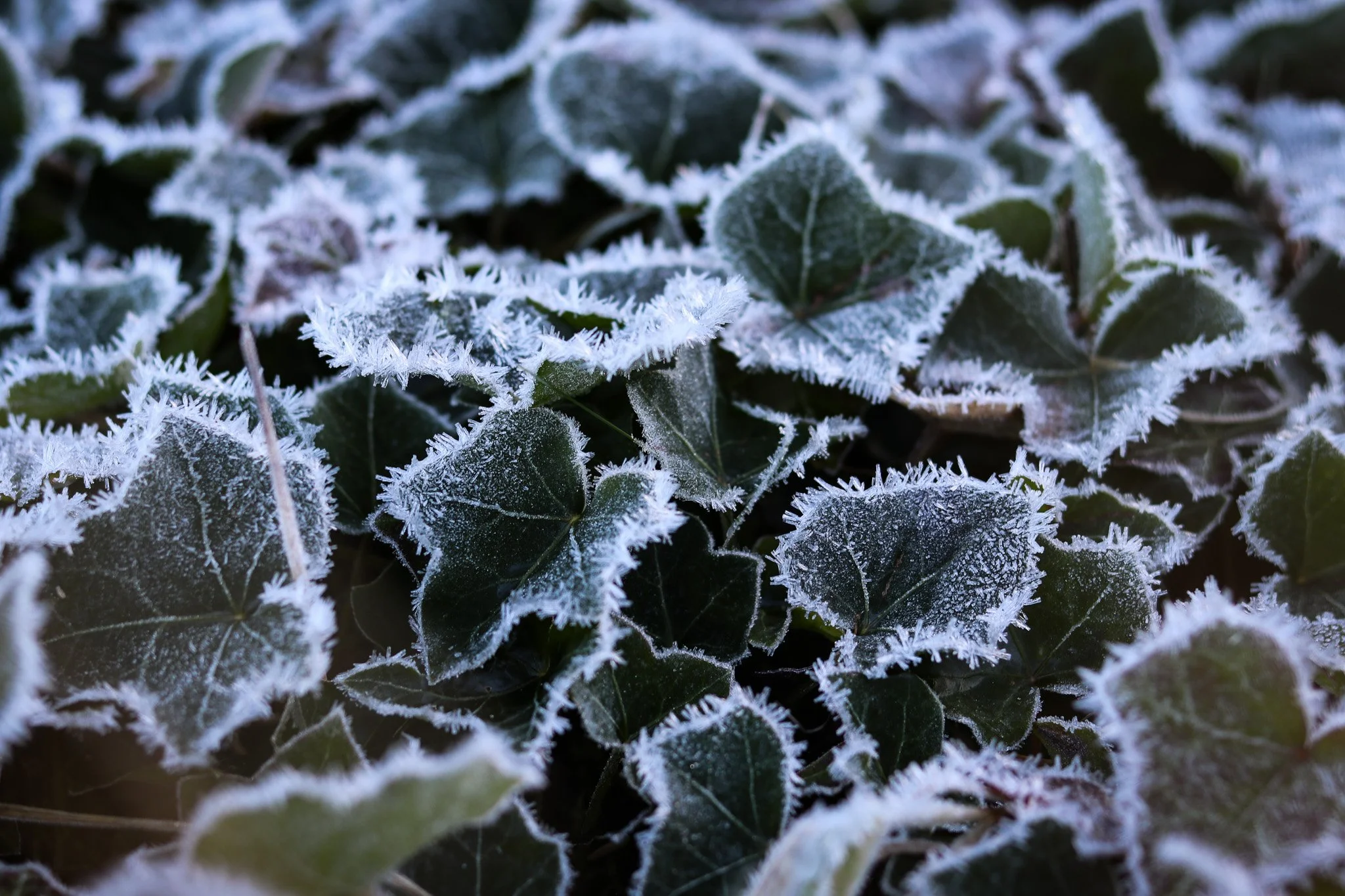Frost & Florography
Recently we had frost and snow, and it coincided with my taking delivery of a new 50mm lens for my camera.
I’ve used a Nikon 3300 DSLR for years, but started experimenting with a Canon EOS80D and (having been more than a little nervous, it being a more valuable and at first complicated camera) loved it.
People often stick with one brand or another but once you figure out the basics, you do find yourself becoming a bit more versatile. Admittedly, it’s probably best to stay loyal in terms of purchasing extra lenses or equipment only compatible with a specific make.
I love the creative process when it comes to photography and part of that involves challenging myself. To be always learning is a good thing; you celebrate the little wins and ‘lightbulb’ moments which make those tricky or confusing times worthwhile. No amount of reading or watching online tutorials can replace doing something yourself. Practice is always more valuable than theory.
So on a frosty morning, I set out with my camera and brand new lens to play with settings.
Once you use a prime lens (as opposed to the ‘kit’ lens which usually comes with a new camera), you need to add another factor into the ‘exposure triangle’ of ISO, and shutter speed: aperture. Tweaking these three settings, you can really take full creative control over what you capture and how it looks.
I always prefer a moody aesthetic, so try and avoid going out on bright sunny days. I find the contrast is too harsh between light and shadow, but at this time of year - and living somewhere both hilly and wooded - it’s always possible to find little pockets and valleys the sun doesn’t quite reach.
Florography isn’t just about photographing flowers. It entails looking carefully for little botanical details: the way the low sunlight illuminates a leaf, or lichen in shades of verdigris and sulphur covering the branches of a tree.
Because you’re so absorbed in seeking out these subjects, it’s a truly mindful practice and you become tuned-in to your surroundings on an almost cellular level.
Frost and snow have such a magical effect on plants and flowers. The white and silver etching emphasises tiny details you wouldn’t normally notice or appreciate. And photographing them means you’re up close, examining and appreciating their exquisite patterns and structures.
It’s always the case that my intended short foray into the woods and fields ends up taking a few hours. Time seems to take flight and ceases to matter while I’m out taking pictures and noticing the small things.

















